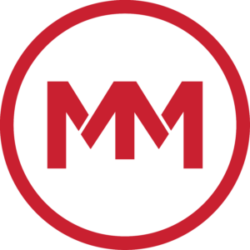Save time and avoid delays by having this information available when you meet with your lender.
- Copy of Purchase Sales contract or Offer to Purchase and all addenda (signed by buyer and seller)
- Past 2 years’ tax returns and W-2s
- Past 2 years’ employment history
- Last 3 consecutive paycheck stubs (5 if paid weekly)
- Name, address and phone for past 2 years’ residence(s) and landlord(s). Renters should bring evidence of 12 months’ rent payments.
- Last 3 months’ statements for savings, checking, CD, money market accounts, etc.
- Recent statement on retirement accounts (IRA, 401K, 403-B, Annuity, etc.)
- Monthly payments and balances on all open accounts
- Divorce decree (if applicable)
- Bankruptcy schedules/Discharge papers (if applicable)
- If you are NOT a US citizen, provide a copy of your green card (front & back). If you are NOT a permanent resident provide a copy of your H-1 or L-1 visa.
Find out how much you are qualified to borrow
When buying a home, you may be pre-qualified or pre-approved. You can be pre-qualified over the phone or on the Internet in a few minutes. Pre-qualification is not as useful as pre-approval. Pre-approval requires a more rigorous process, including verification of your credit, income, assets and liabilities. It is highly recommended that you be pre-approved before you start looking for a home.
Being pre-approved will:
- Inform you of your maximum affordable home value, and save you from previewing properties outside your price range.
- Put you in a stronger negotiating position with the seller, because the seller will know your loan is pre-approved
- Help you close quickly, since your loan is pre-approved.
What loan program is best for your situation?
- Think about how long you plan to keep the loan. If you plan to sell your home in a few years, you may want to consider an adjustable-rate or balloon loan. If you plan to keep your home for a longer time, you may want to consider a fixed-rate loan.
- Understand the relationship between rates and points. Points are considered prepaid interest and may be tax deductible. Each point is equal to 1 percent of the loan. For example 1 point on a $150,000 loan is $1,500. The more points you pay, the lower your rate.
- Compare different loan programs. With so many programs to choose from, it’s hard to figure out which program is best for you. Consult an experienced loan originator who can help you find a loan program that best fits your short- and long-term plans.
All the research and preparation you’ve done to this point makes this step an easy one.
You can apply online or in person. Complete and sign the residential loan application, Form 1003 and the attached loan info sheet, credit authorization and fair lending notice. Your loan originator may also request additional documents, such as a loan information sheet, credit authorization and fair lending notice.
Once your loan application has been received, the loan approval process starts immediately. This involves verifying your:
- Credit history
- Employment history
- Assets including your bank accounts, stocks, mutual fund and retirement accounts
- Property value
Based on your specific situation, additional documents or verifications may be required.
To improve your chances of getting a loan approval:
- Fill out the loan application completely.
- Respond promptly to any requests for additional documents. This is especially critical if your rate is locked or if you plan to close by a certain date.
- Anything that causes your debts to increase might have an adverse affect on your current application.
- Do not move money into your bank accounts unless it can be traced. If you are receiving money from friends, family or other relatives, please contact us.
- Do not go out of town around the closing date. If you do plan to be out of town when your loan is expected to close, you may sign a power of attorney, to authorize another individual to sign on your behalf.
- Notify your loan officer before applying for any other credit, including credit cards, personal loans or even with another mortgage company. Some loan programs have strict guidelines regarding your credit score. Credit inquiries may lower your credit score and may have an adverse affect on your loan approval.
After your loan is approved, you will be required to sign the final loan documents. This will normally take place in the presence of a notary public. Be prepared to:
- Bring a cashiers check for your down payment and closing costs if required. Personal checks are normally NOT accepted.
- Review the final loan documents. Make sure that the interest rate and loan terms are what you were promised. Also, verify the accuracy of the name and address on the loan documents.
- Sign the loan documents. The notary will require that you have your picture ID with you. Some lenders also require seeing your Social Security card.
Your loan will normally close shortly after you have signed the loan documents. On refinance and home equity loan transactions, federal law requires that you have three days to review the documents before your loan transaction can close. Purchase transactions do not have a three-day rescission period.
Now that we have an idea of the process let’s breakdown the loan programs


I like what you guys are up too.Such smart work and reporting! Carry on the excellent works guys I have incorporated you guys to my blogroll.I think it’ll improve the value of my site 🙂
Thanks a lot. This is interesting seeing
Hello.This post was extremely motivating, especially because I was searching for thoughts on this subject last couple of days.
Very interesting blog. Im glad I checked it out….will follow.